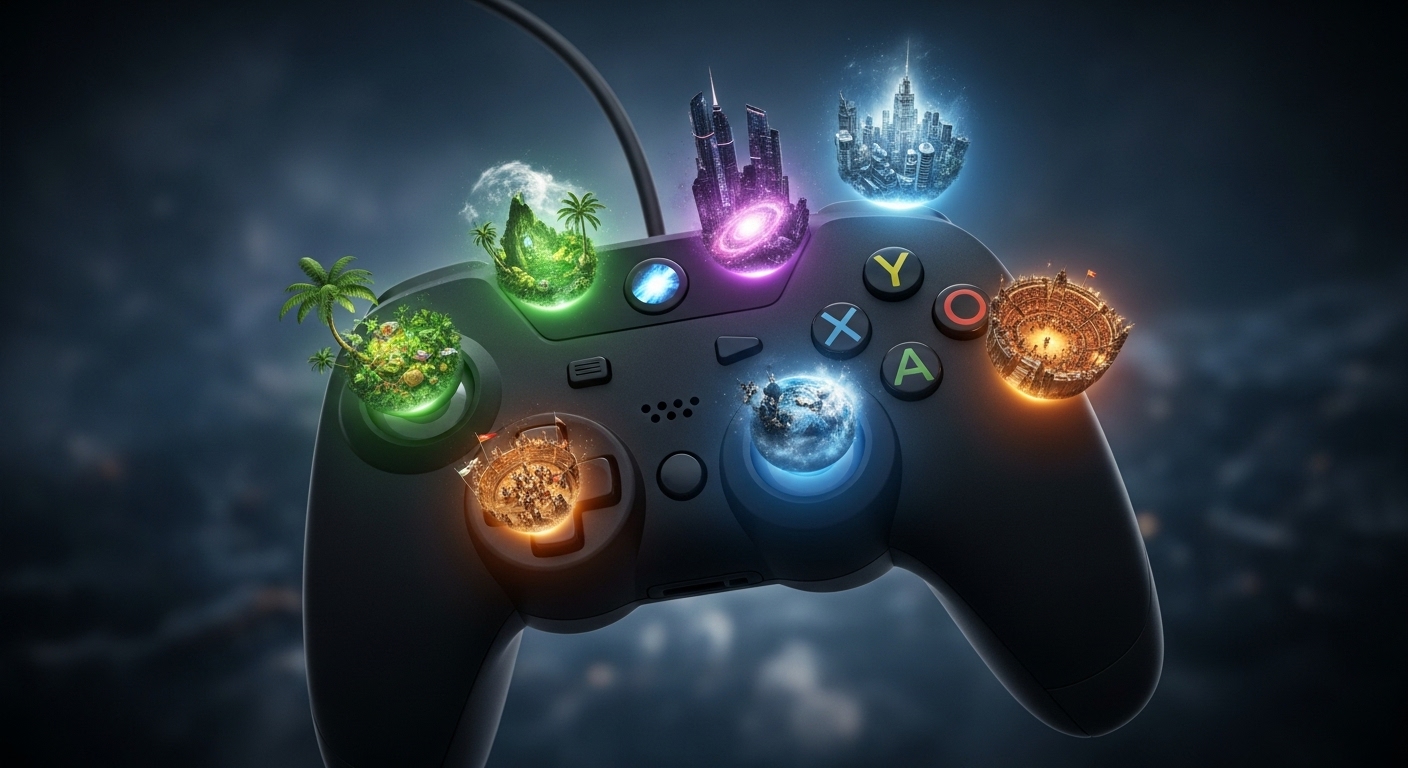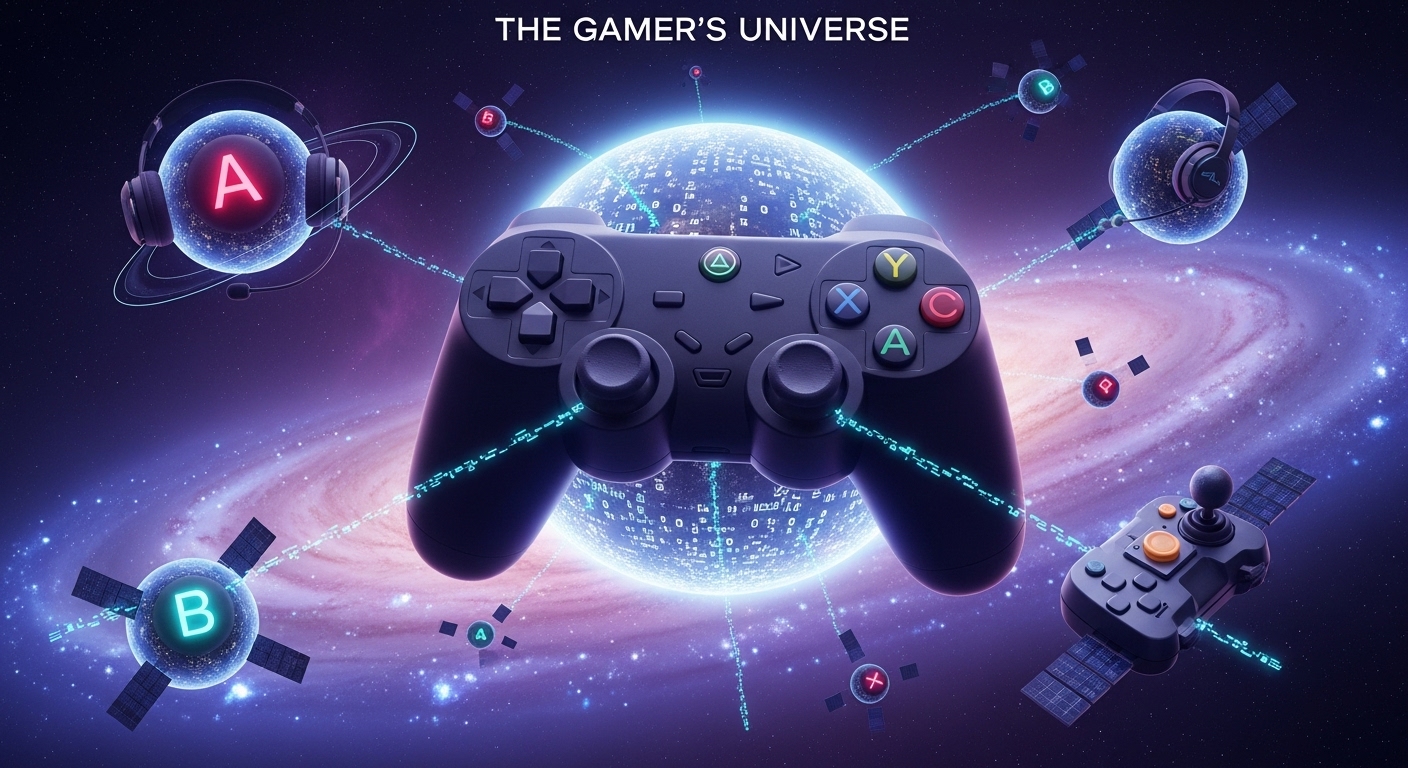Gaming has come a long way since its inception, transforming from a simple pastime into a global cultural phenomenon that touches millions of lives worldwide. In this blog post, we’ll take an in-depth look at the evolution of video games, exploring their history, technological advancements, cultural impact, and future prospects. This journey through gaming will showcase the innovation, creativity, and passion that has shaped the industry.
The Beginnings: Arcade Games and Early Consoles
The history of video games dates back to the late 1950s and early 1960s, when pioneers in computing began experimenting with interactive entertainment. The very first video game, Tennis for Two, was developed by physicist William Higinbotham in 1958. However, it wasn’t until the 1970s that the gaming industry as we know it truly began to take shape.
In 1972, Pong, created by Atari founder Nolan Bushnell, became the first commercially successful video game. It was a simple two-player tennis simulation, and it introduced the concept of arcade gaming. Arcades quickly became a social hub, attracting people from all walks of life. The success of Pong led to the creation of other iconic arcade games like Space Invaders (1978), Pac-Man (1980), and Donkey Kong (1981), which helped establish gaming as a legitimate form of entertainment.
During this period, home consoles started emerging. In 1977, the Atari 2600 was released, allowing players to enjoy their favorite arcade games at home. This marked the beginning of the home gaming revolution. The 1980s saw the release of the Nintendo Entertainment System (NES), which became one of the most influential consoles in history. The NES popularized franchises like Super Mario, The Legend of Zelda, and Metroid, setting the foundation for many of the most beloved gaming franchises today.
The Rise of 3D Graphics and the Era of PlayStation
As the 1990s approached, the gaming industry underwent a significant transformation. The introduction of 3D graphics and the shift from 2D gameplay to fully immersive three-dimensional worlds changed the way video games were designed and played. Consoles like the Super Nintendo Entertainment System (SNES) and Sega Genesis dominated the early part of the decade, but it was the launch of Sony’s PlayStation in 1994 that truly revolutionized the industry.
The PlayStation was the first console to fully embrace 3D graphics, enabling developers to create games that were more visually complex and immersive. Games like Gran Turismo and Final Fantasy VII became landmarks in gaming, showcasing the potential of 3D gameplay and narrative-driven experiences. The PlayStation’s success also helped Sony establish itself as a dominant force in the gaming industry, a position it would maintain for decades.
At the same time, the Nintendo 64 was released, offering even more groundbreaking 3D gameplay with classics like Super Mario 64 and The Legend of Zelda: Ocarina of Time. These games set new standards for gameplay design, exploration, and storytelling, and are still considered some of the best games of all time.
The late 1990s and early 2000s also saw the rise of PC gaming, with powerful computers enabling more complex and detailed games. Titles like Half-Life, Quake, and Starcraft pushed the boundaries of what was possible in terms of graphics, artificial intelligence, and multiplayer gameplay. Online gaming began to gain traction, laying the foundation for the massive online communities that would later emerge.
The Online Revolution and the Birth of MMORPGs
As broadband internet connections became more widespread in the late 1990s and early 2000s, online gaming began to gain momentum. The internet opened up new possibilities for multiplayer experiences, allowing players to connect and compete with others around the world.
One of the most significant developments during this period was the rise of massively multiplayer online role-playing games (MMORPGs). These games, like World of Warcraft, EverQuest, and Guild Wars, allowed players to immerse themselves in vast, persistent virtual worlds, where they could interact with thousands of other players in real time. The success of World of Warcraft, in particular, was a game-changer. Released in 2004, it quickly became one of the most popular and influential games of its time, boasting millions of subscribers worldwide. MMORPGs changed the way people viewed online gaming, turning it into a social experience rather than just a competitive one.
Simultaneously, the introduction of Xbox Live for the Xbox console brought online multiplayer gaming to the console market. Halo 2 became a phenomenon, with its online multiplayer mode attracting millions of players and setting the stage for future console-based online games. Sony responded by launching the PlayStation Network (PSN) for the PlayStation 3, further solidifying the importance of online gaming in the industry’s future.
The Advent of HD Graphics and the Rise of High-Definition Gaming
By the mid-2000s, the gaming industry had entered a new era defined by high-definition (HD) graphics. Consoles like the Xbox 360 and PlayStation 3 offered support for 1080p resolutions, allowing developers to create more visually stunning and realistic games. This technological leap raised the bar for graphical fidelity, and games like The Elder Scrolls V: Skyrim, Uncharted 2: Among Thieves, and Gears of War showcased the potential of HD graphics.
With the transition to HD gaming, developers also began to explore new ways to tell stories and engage players. Narrative-driven games, like The Last of Us and Heavy Rain, became more prominent, offering emotional depth and cinematic experiences that were previously unseen in the medium. These games proved that video games were not just a form of entertainment but also an art form capable of telling powerful, meaningful stories.
The PlayStation 3 and Xbox 360 also marked the rise of digital distribution platforms like the PlayStation Store and Xbox Live Marketplace, where players could download games, add-ons, and other content directly to their consoles. This shift to digital media helped pave the way for the digital game distribution model we see today, where players can purchase and download games without the need for physical discs.
The Mobile Gaming Explosion
In the 2010s, mobile gaming exploded onto the scene, thanks to the widespread adoption of smartphones and tablets. Games like Angry Birds, Candy Crush Saga, and Clash of Clans became household names, attracting millions of players worldwide. Mobile gaming democratized gaming in a way that no other platform had before. With mobile devices, anyone could play games, regardless of age, location, or gaming experience.
The rise of mobile gaming also led to the development of new business models, such as free-to-play games and in-app purchases. These models allowed developers to reach larger audiences and generate revenue through microtransactions, fundamentally changing the economics of the gaming industry.
Mobile gaming also sparked the development of new genres, such as puzzle games, strategy games, and hyper-casual games, which were designed to be easily accessible and addictive. Mobile gaming became a dominant force, with games like Pokémon GO demonstrating how gaming could merge with real-world experiences, further blurring the lines between physical and digital spaces.
Virtual Reality and Augmented Reality: The Next Frontier
As technology continues to advance, the gaming industry is exploring new frontiers with virtual reality (VR) and augmented reality (AR). VR gaming, which immerses players in fully digital environments, offers a new level of immersion that traditional gaming cannot match. With VR headsets like the Oculus Rift, HTC Vive, and PlayStation VR, players can step into virtual worlds and interact with them in ways that were previously impossible.
Popular VR titles like Beat Saber, Half-Life: Alyx, and The Walking Dead: Saints & Sinners have garnered critical acclaim, showcasing the potential of VR to revolutionize the gaming experience. VR offers an entirely new way to engage with games, making them more immersive and interactive than ever before.
Meanwhile, AR gaming has gained popularity through games like Pokémon GO and Harry Potter: Wizards Unite, which combine digital elements with the real world. AR has the potential to change the way players interact with their surroundings, blending the virtual and physical worlds in innovative ways.
While VR and AR are still in their infancy, they represent the future of gaming, offering new experiences that could redefine how we play games in the coming years.
The Future of Gaming: What’s Next?
As we look to the future, the gaming industry shows no signs of slowing down. Advances in artificial intelligence (AI), cloud gaming, and 5G connectivity are likely to shape the next generation of gaming experiences. Cloud gaming services like Google Stadia, Xbox Cloud Gaming, and NVIDIA GeForce NOW are allowing players to stream games directly to their devices, eliminating the need for powerful hardware and making high-quality gaming more accessible than ever.
AI is also playing an increasingly important role in game development. From advanced NPC behavior to procedurally generated worlds, AI has the potential to create more dynamic and lifelike game environments. Machine learning algorithms could even be used to adapt gameplay to individual players’ preferences, making each gaming experience unique.
Moreover, the integration of blockchain and NFTs (non-fungible tokens) into gaming could create new forms of digital ownership, allowing players to buy, sell, and trade in-game items across different platforms. While still a controversial topic, blockchain technology could have a significant impact on the way games are played and monetized in the future.
Finally, the concept of “metaverse” gaming, where players can inhabit shared virtual spaces, is gaining traction. Virtual worlds like Second Life and Fortnite are already laying the groundwork for this kind of immersive, interconnected gaming experience. As virtual and augmented reality technology advances, the idea of a



